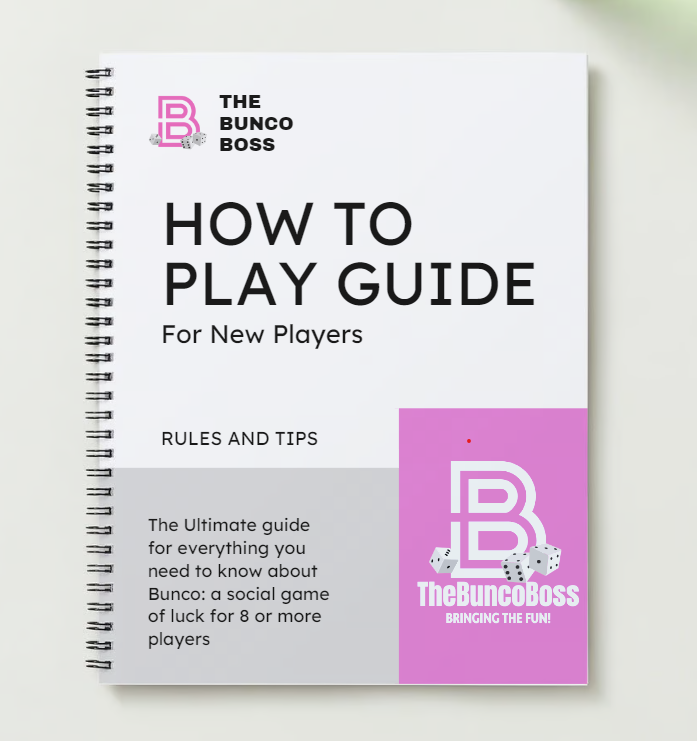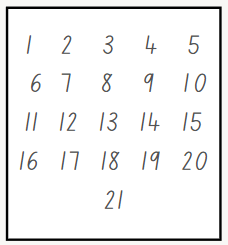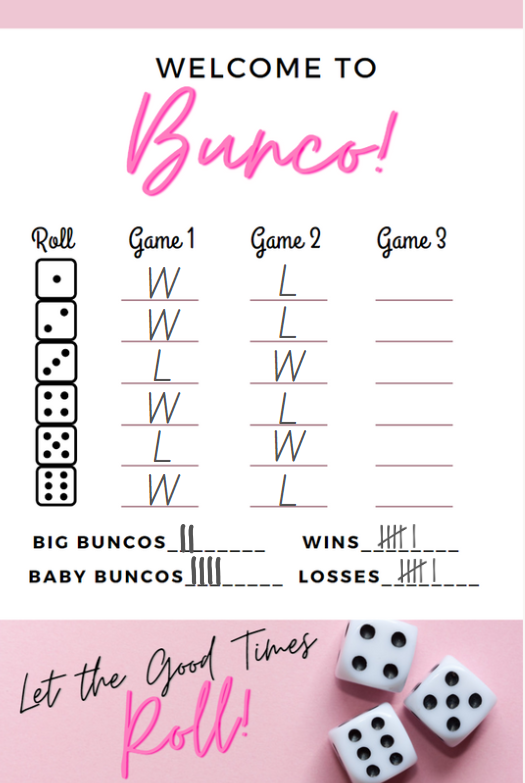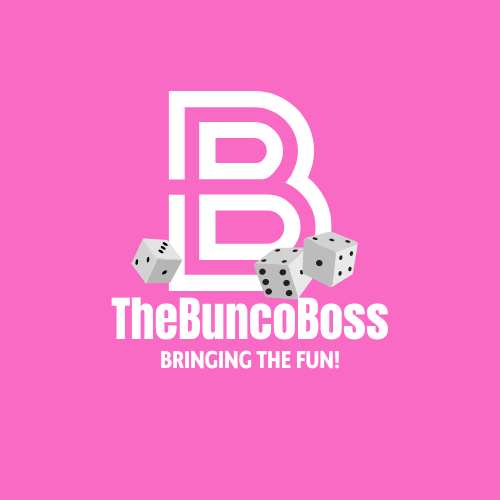How to play Bunco – A Free guide for New Players- Bunco Rules and Tips

Here is the Ultimate free guide to rules, tips, and everything you need to know about How to play Bunco: a social game of luck for 8 or more players. If you would rather purchase a Printable PDF guide, please click here!
Note: This post contains affiliate links. If you enjoy this guide and the content we share, please help us out by purchasing through these links!
Game Overview
A quick note about this guide: Bunco has been played for many years and has many variations! Our guidebook has combined rules and ideas from multiple sources to come up with the most simple and most social way to play. Our goal is to get you playing and rotating in the easiest way so you can focus on having FUN!
Bunco is the social game of luck! Here’s the Bunco rules for how to play:
It is best played with 12 or more players, but as few as 8 players will work. Always try to have a multiple of 4 players if possible. As you rotate through the games, you will interact with different people each time, making it a great way to meet new friends and ensure you get to interact with everyone at the party.
Most Bunco groups will have a weekly or monthly Bunco night. You can make it more fun by having a theme for each Bunco night, and adding in snacks and beverages! We have plenty of ideas for you on our social media pages!
It’s a good idea to have hosts or hostesses rotate locations and hosting responsibilities each time. This helps spread the burden of hosting, and keeps fun at the forefront.
Game Setup
- Gather Supplies
- Tables and chairs: Set up enough tables and chairs to accommodate all the players. A standard game of Bunco has four players per table.
- Bunco scorecards: These are pre-printed scorecards that will be used to keep track of each player’s score. (Hint: for scorecards you can download and print yourself, visit TheBuncoBoss scorecard site)
- Pencils or pens: Each player will need a writing instrument to mark their scores.
- Three dice per table: You’ll need three standard six-sided dice at each table.
- Bunco Bells: Each table needs a bell or noise maker to start and stop the game. Alternatively, players can opt to yell “Bunco” instead.
- Prizes: Prizes for the winners are not necessary, but definitely make the game more exciting!
2. Set up tables:
- Set up enough tables to accommodate all players. Each table should seat four people. A small card table is the best option, but feel free to use whatever you have!
- Make sure each person has a scorecard and a pen or pencil at their place setting.
- You will need to designate one table as the “high” table, and one table as the “low table.” If you have 3 tables, you can call the third table the “middle table.” If you have 4 or more tables, you will need to number the tables in order so players know where to move in each round. (More on this later!)
3. Determine Player Set-up
- Bunco is typically played with 12 players, divided into three tables of four players each. However, you can adjust the number of players and tables based on the available space and preferences.
- Ideally, you should have an even number of players, in multiples of four. (8, 12, or 16 players is typical.)
- If you do not end up with an even number of players, you can play with a “ghost”, which will be explained later.
4. Assign starting tables and partners
- Assign players to the tables based on a predetermined order, or allow players to choose their own seat at random.
- Each player will have a designated partner at their table for each round. This is usually the person sitting directly across from them.
Bunco Game Rules
A quick note about the rules: Bunco is a game that has been played for many years and has many variations depending on who you play with, and where you play it! Our guidebook has combined bunco rules from multiple variations to come up with the most simple and most social way to play. Our goal is to get you playing and rotating in the easiest way so you can focus on having FUN!
- Game Objective
- The objective is to score points by rolling certain numbers on the dice during each round.
- The game consists of six rounds, and each round has a specific target number (e.g., Round 1: target number is 1, Round 2: target number is 2, and so on).
- Players will take turns rolling the dice, and each partnership (2 person team) will earn points based on the number of target numbers they roll.
- The round ends when someone rolls a “Big Bunco” or when a player and their partner reach a combined score of 21.
2. Playing the game
- Begin with the first round. The player with the Bunco Bell starts the round by ringing the bell to signal the beginning of play. All tables will then start simultaneously.
- Once the round begins, players take turns rolling all three dice at once.
- Players will continue to roll all 3 dice while their turn is in play. The turn ends and passes Clockwise to the next player as soon as the player rolls the dice and does not roll at least one of the targeted number.
3. Scoring
- Each die that lands on the target number for that round scores one point. (e.g., Round 1: target number is 1, so the player gets one point for each die that lands on a 1. If a player rolls 2 dice with the number 1, they get 2 points.).
- Non-target numbers are ignored. If the player rolls 3 non-target numbers they will pass clockwise to the next player.
- If a player rolls the target number on all 3 dice at once, they have scored a “BUNCO” and should shout “BUNCO” or ring the Bunco bell to stop the game.
- Players rolling at least one die with the target number should continue rolling all 3 dice simultaneously until they either roll a BUNCO or roll 3 non-target numbers.
- If a player rolls 3 identical numbers, but it is not the number of the target round, the player has scored a “Baby Bunco,” which is worth 5 points. They will continue to roll. (E.g., a player rolls three 4’s on round 1.)
- After each roll, players should keep track of their scores on the scorecards. They will add the number of points they score to the number of points their partner is scoring. The first partnered team to 21 points wins. (Unless someone scores a BUNCO first to stop the game.)
- At the end of the game, each player with mark a “W” or and “L” on their scorecard, indicating if they Won or Lost that round. Each player should also keep track of the number of “Baby Buncos” and “Buncos” scored.
- Our favorite way of keeping score during the game is to track the combined scores of you and your partner on the back of your scorecard.
- Before the game, write the numbers 1-21 in rows of 5 each on the back of your card, as shown in the example below.
- As you score points, move your finger along the corresponding numbers.
- If you score a “Baby Bunco”, worth 5 points, simply drop down to the next row.
- When the bell rings to end the game, the number your finger is on will be the total score for your team!

Trust us, this is much easier than trying to count and add while the game is in play! It also allows you to carry on a conversation, which makes the game more fun!
4. Rotation
- Once the first round is completed, have each partnered team tally up their total score. If a team reached 21 first or rolled a BUNCO, (not a baby Bunco), they automatically win that round. Otherwise, the team with the highest total points wins.
- The winning team from each table will move up a table. (e.g., if they started at the middle table, they will advance to the high table. If already at the Highest table, they will stay put.)
- The losing team from each table will move down a table. (e.g., if they started at the middle table, they will retreat to the low table. If already at the lowest table, they will stay put.)
- Once the teams switch tables, each person at the “new” table must have a new partner. (You cannot have the same partner 2 rounds in a row.)
- The player with the Bunco Bell starts the next round, and the gameplay continues as before.
- Repeat this process for all six rounds. If you are playing more than one game, you will repeat this entire process for the number of games desired. (Usually 1 to 3 games per event.)
5. Determining the Winner
- After completing all desired games, each player will sound the number of wins, losses, “Baby Buncos”, and “Buncos” scored.
- The player or players with the highest number of wins or “W’s” at the end of the games are declared the winners.
- Optional prizes can be given for the person with the most losses or “L’s”, the person with the most “Baby Buncos” and the person with the most “Buncos”
Sample Scorecard

- In this example, the player won rounds 1, 2, 4, and 6 on game one. They also won rounds 3 and 5 on game 2. Their total number of wins is 6, total number of losses is also 6.
- Throughout the games, they also had a total of 2 “Buncos” and 2 “Baby Buncos.”
F.A.Q’s – Frequently Asked Bunco Rules Questions
Q: What do we do if there is a tie at the end of the round?
A: For a tie at the end of a round (both teams at the table end on the same score) you will have a roll off. A player from each team will roll ONE die. The first person to roll the target number for the round wins. (Example, one round 3, the first person to roll a 3 wins.)
Q: What do we do if there is a tie at the end of the event?
A: For a tie at the end of a the event (two player score the same total number of Ws and Ls) you can EITHER have a roll off, or let the players decide to split the winning prize. If doing a roll off, each player will roll ONE die. The first person to roll a ONE wins.
Q: What if there is not an even number of players?
A: If you do not have a multiple of 4 for your total number of players, you will play with a “Ghost”. We recommend using a “Ghost card” to carry to each table to avoid confusion. You can play with up to 2 ghosts. When it is the “Ghost’s” turn, their partner will roll for them, and will record their score just as if they are playing with a human partner. (Ghost cards are available with our scorecard downloads )
And that’s it! That’s how to play Bunco. If you still have questions, please contact us!
